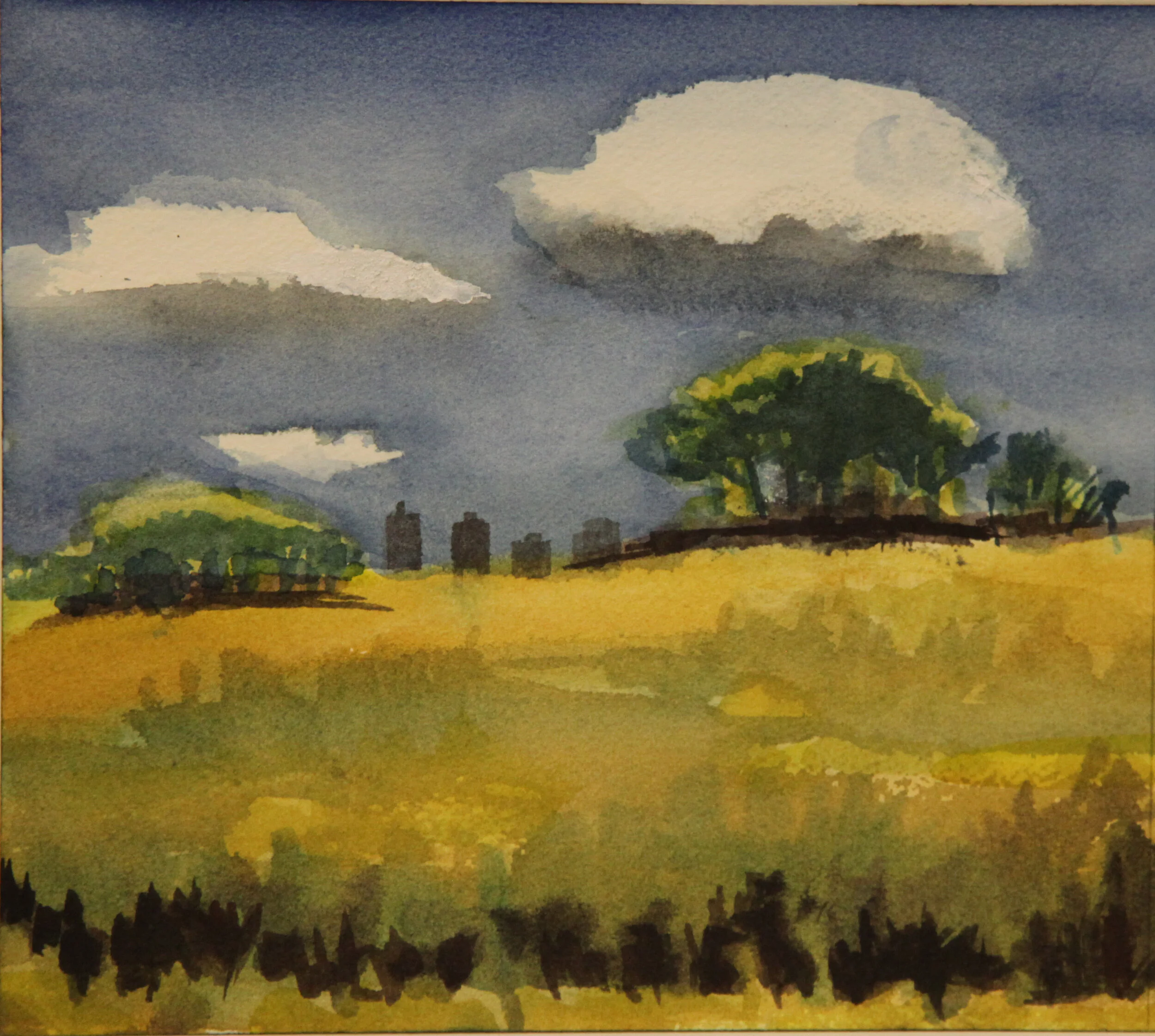The Interaction of Watercolor - Peggy Roalf
Dates: On Mondays (April 12 – May 17, 2021)
Time: 3:30-5:30 P.M (EST)
Number of Classes: Six (6)
$120
ABOUT THE TEACHING ARTIST:
Peggy Roalf
BIO
Peggy Roalf has taught at The Cooper Union School of Art; Fordham Visual Arts/Lincoln Center; International Center of Photography/Certificate Program; Pratt Manhattan Graphics Center; and School of Visual Arts, among others. She studied studio art at The Cooper Union School of Art; watercolor painting with John Gundelfinger at SVA; is a habitue of Friday Night Drawing at the New York Academy of Art, and believes that Drawing Changes Everything. Her Café Nietzsche Drawing Club , live at The Met, will resume when pandemic constraints are lifted.
CONTACT INFO
WEBSITE AND SOCIAL MEDIA LINKS
TITLE OF THE COURSE
The Interaction of Watercolor
If you’ve tried to master transparent watercolor, and it left you gasping for air, this course is for you. Using seven tubes of paint, the secrets of this versatile medium will be revealed. You’ll discover the fun of fearlessly allowing the rogue nature of watercolor to work for you, in stages that lead to a visual and scientific understanding of the interaction of color.
Week One: Mix bright and dark colors across the spectrum, making free-form color charts
Week Two: Mix colorful blacks and grays, creating solid, dimensional forms, both from observation and imagination
Week Three: Create a still life from observation based on a contemporary masterwork
Week Four: Create a sculptural head based on a photo of a modern masterwork
Week Five: Create a personal project: a sculpture, a head, or a still life, from observation or imagination
Week Six: Continuation of Week Five; student work slideshow
Island Trees #10, 2020; Blacks and grays from primary colors
Each session will begin with a brief slideshow of works that embody core ideas about the interaction of color, composition, and form.
Painting with a limited palette of primary colors, students will develop a foundational understanding of the science of color from observation and experience.
Peggy’s painting table
Materials
If you have questions about materials, please email me: peggy@sculptorsalliance.org
• Paint: The best value: primary color mixing sets by Daniel Smith and QoR Modern Watercolor [about $30. for six 5 ml tubes]. You can use paints you have on hand provided they are the colors specified below. If you use different colors, you basically cannot learn what this course offers [we will cover all this in first meeting].
• Brushes: You do not need expensive brushes in this course. To start out, please have a No. 14 round; No. 20 round or quill; ¾” flat; No 12 filbert or oval wash. I’ve found best value synthetic brushes are Grumbacher Goldenedge; for high quality at reasonable price: Princeton Neptune; but please use what you have as much as possible. There are many ways of spreading paint onto paper!
• Paper: With transparent watercolor, good paper is equally important as paint quality for getting intense, saturated colors. You will probably want to try a couple of different papers, available in large sheets, which you will rip into smaller sizes.
• Scrap watercolor paper for testing colors
• Paper towel and cotton T-shirt rags
• 12-inch white dinner plate or some other large mixing surface; a conventional palette is not required, but, please use what you have on hand
• Hair dryer [optional but very useful]
• Spray bottle
• 2 jars for water [pint and quart]
Island #1, 2018
Transparent Watercolor Paint in tubes
• Cool red: Quinacridone Rose [PV19] or Alizarin Crimson hue [PR83]
• Warm red: Pyrrol Scarlet [PR255] or Pyrrol orange [PO73]
• Neutral yellow: Hansa Yellow Light [PY3]
• Warm yellow: New Gamboge [PY97+or Indian Yellow PY97]
• Warm Blue: French Ultramarine [PB29]
• Pthalo Blue, Green Tint [PB15]
• Burnt Sienna [PBr7]—wildcard, not in sets
Recommended watercolor paint in tubes
Daniel Smith
QoR Modern Watercolor
M. Graham [good value]
DaVinci
Schmincke [high priced]
Recommended cold pressed watercolor paper
• Canson Montval pad, 140lb, 10 x 15” 12 sheetS
• Fabriano Artistico, sheets or blocks
• Legion Stonehenge
• Hahnemühle Harmony pad
• Strathmore 400, sheets or blocks
• Saunders [sheets only, very high priced]
You will need more than 12 sheets/10x15” for the course, and you might want to experiment with different sheets, so please play around!
What Peggy’s students have said:
I drew in Peggy’s Café Nietzsche Drawing Club at the Met last winter, so when she announced The Interaction of Watercolor this fall, I jumped. I’ve never painted before; I’m hooked.—Paula Alyce Scully, photographer
Roquemengarde, 2017
Disclaimer
By Registering to this class participants agree with Sculptors Alliance Registration Agreement and Waiver
This workshop is given in English and conducted on Zoom. The workshop is scheduled in Sculptors Alliance Google Calendar; invitations to the meeting will be sent prior to the first class meeting, and on the morning of the meeting thereafter. Participants must be familiar with Zoom, and have it ready to launch the meeting on time. [YouTube video]
Peggy Roalf reserves the right to alter the workshop as she sees fit, in consideration of the group dynamic.
This course and this syllabus are the intellectual property of Peggy Roalf, protected by the United States Copyright Law 17 USC section 101 and following. Recording of video/audio is not permitted. Course materials may not be distributed in any form whatsoever. The workshop is not recorded by Sculptors Alliance.





















